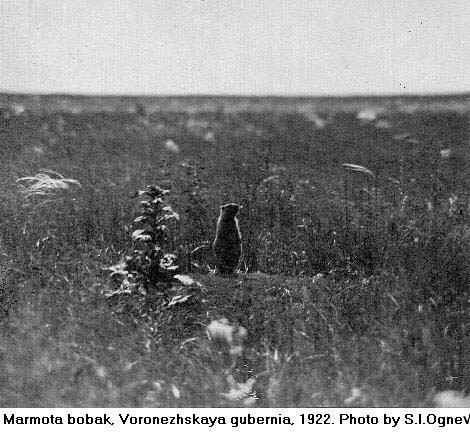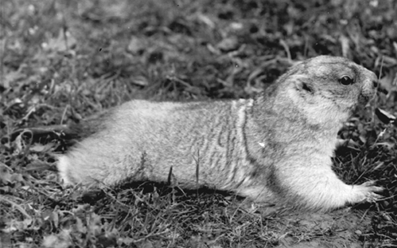Baibak




Marmota bobak is a large hybernating rodent (body length up to 58 cm, tale length - up to 14,5 cm) adapted to burrow life. It is represent a surface form of squirrel family. Baibak is a valley species, it inhabited everywhere in steppes from the Ukraine to River Irtysh, but the ploughing up of virgin lands and intensive hunting sufficiantly undermined bobak reserves. Now baibak is preserved in reservoir of virgin steppe in the River Don valley, Middle Volga and Southern Ural. It leaves in big families in burrows with 2-3 entrances and total length from 20 to 100 m. Burrows are up to 4 m depth with large nesting and winter cameras. These burrows are used for several decades, and butanes' form over such a burrows. Butanes' are the hillocks up to 1 meter in height and in diameter up to 20 m. Usually butanes have special dry microclimate and are enriched by nitrigen and mineral substances from marmots droppings. Besides the base borrow some smaller short burrows-shelters disperse around main one, where marmots hide in the case of danger. Baibak eats lush and soft plant food. It spends winter in the hybernation (usually it sleeps in family groups of 12-15 animals). It does not lay in supplies for the winter, but intensively feeds itself making it weight twice as mach during two or three summer monthes. Burrows are tightly closed by earthen plugs. Baibak is an object of fur hunting and it should be protected.